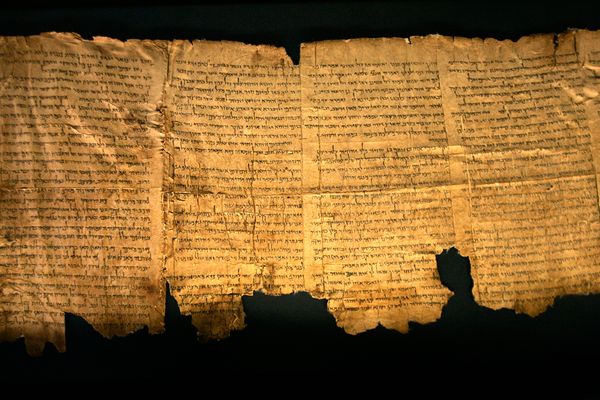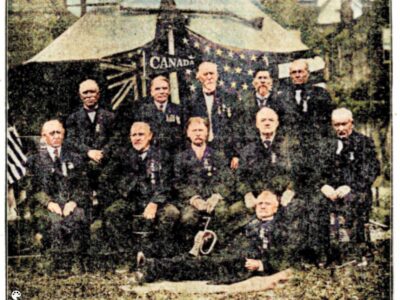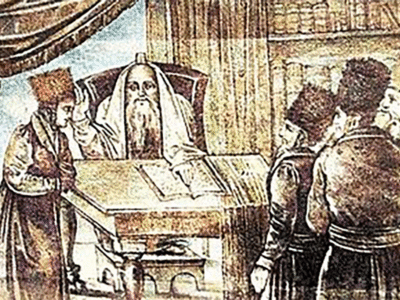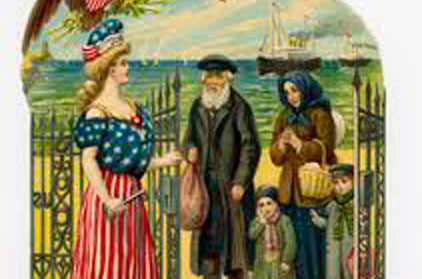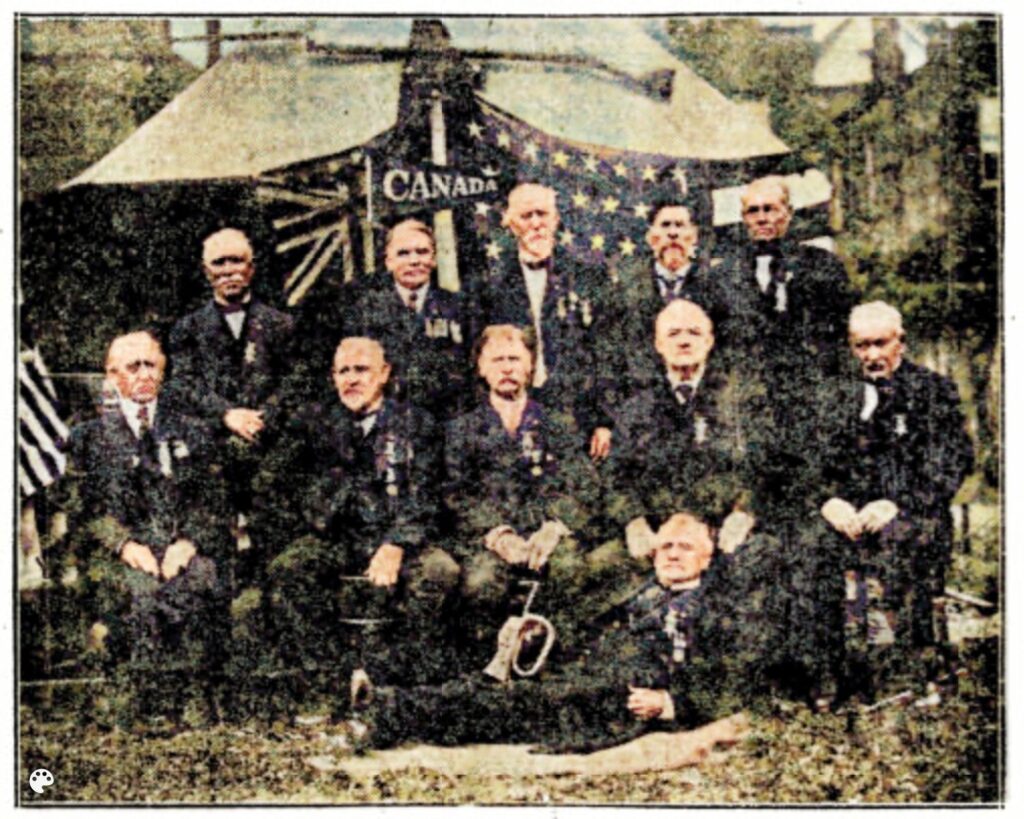
From the Toronto Sunday World, May 31, 1914
Saturday May 30, Decoration Day, has been looked upon as one of the most American of all American holiday, for it is on Decoration Day that the grand army of the republic past and present is honoured by the entire nation.
Recently, however, attention has been called to small band of men that gather every month in Toronto, and that each Decoration Day come together to do honour to their comrades who have been called by the heavy hand of age and disease.
These men are members of the G.A.R. but at the same time they are Canadians. They have always been Canadians and always will be. They are part of the remnant of some 64,000 Canadians who crossed the border during the great Civil War, and fought against the institution of slavery, despised by every true British subject. An army of fighters larger than that which the United States contemplated sending to crush Mexico, went south to fight for a principle under a foreign flag.
The J.S. Knowlton Post G.A.R. No. 530 was named after a brother of the present adjutant, who was adjutant of the 7th Missouri Veteran Infantry. He saw probably more active service than any other Canadian until he died from disease contracted while he was with Gen. Sherman on the famous “march to the sea.” J. S. Knowlton was a Toronto boy, and his body was brought home and laid in the Necropolis, and even should none other be decorated the Post always sees that the grave of its dead patron is covered with flowers on Decoration Day.
Sir John A. Macdonald, just before his last illness, gave special permission for the formation of the Post, and in his letter to the first commander of the Post said that he wasn’t afraid to trust the men that had gone out to fight against slavery, and that had come back to live under the flag of their birth.
For many years the old men turned out every Memorial Day to decorate the graves of their fallen comrades, but as year by year, the number dwindled and the members became more feeble this was eventually discontinued. The average age of the survivors in Toronto in over 73 years, the oldest being 88 and the youngest 68 years.
Toronto Sent Two Hundred
One of the members of the Post is Mr. John A. Macdonald, who, at the age of sixteen, seized by the spirit of adventure, and warmed by the cry of freedom flaunted by the northern states, set out for the south with several other boys, intending to enlist in the navy. Mr. Macdonald, at that time was living in St. Catharines, and was one of 87 men and boys when went from that little town to fight for the Union.
Toronto sent its deputation of over 200, but less than half returned to become members of the local G.A.R. Post, the other members having immigrated to the city.
 Navies in those days differed from the modern assemblage of steel, and offered many more exciting adventures than they do today. The Union Navy, recruited at the beginning of the war, was made up of a few “landlubbers,” a few able-bodied seamen, and a whole lot of ordinary seaman. As young John Macdonald was among the younger “landlubbers” he was not able to land a job, and enlisted with the Seventh New Jersey Infantry, which later later became a part of Hooker’s division of the Army of the Potomac.
Navies in those days differed from the modern assemblage of steel, and offered many more exciting adventures than they do today. The Union Navy, recruited at the beginning of the war, was made up of a few “landlubbers,” a few able-bodied seamen, and a whole lot of ordinary seaman. As young John Macdonald was among the younger “landlubbers” he was not able to land a job, and enlisted with the Seventh New Jersey Infantry, which later later became a part of Hooker’s division of the Army of the Potomac.
“Canadians played a very important part in that great war. The ranks of the Union Army were dotted with Canadians who, not only performed creditably, but made a name for themselves as officers and fighters,” said Capt. Macdonald to The Sunday World.
Returned from War to Drive Out Fenians
The old captain sat back and puffed away at his pipe, as he glanced around his den, which he has decorated with a hundred and one mementos of his fighting days.
“A private for three years in the American army, and then a soldier fighting for the Union Jack in Canada, is surely an honour worthy of any man. It was just a year after I got back from the Civil War that the Fenian trouble broke out, and many of us that had helped the Union were called upon to drive the invaders from Canada. It was not really to fight for a union of states that we placed our lives in jeopardy, but rather to assist the great cause of freedom, which long before that time had been a British institution.
“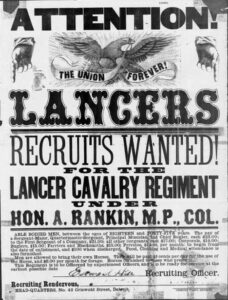 The part that Canadians played in the Civil War has been left almost untouched by writers on both sides of the line, and while officially this country maintained a strict neutrality, in spirit we were nearly all “for the North.” Perhaps the most famous regiment of men that we sent to the war was Rankin’s Lancers. Every man was a Canadian. This regiment was recruited by Col. Arthur Rankin, at that time a member of parliament for Essex, and went through the war with a great record. The regiment was recruited principally around Windsor, and after reaching full strength was mustered into the United States service at Detroit, Michigan, from where it went through a series of actions that gave the Canadians an enviable reputation. When Colonel Rankin returned to Canada he was arrested and charge with breaking the neutrality proclamation.
The part that Canadians played in the Civil War has been left almost untouched by writers on both sides of the line, and while officially this country maintained a strict neutrality, in spirit we were nearly all “for the North.” Perhaps the most famous regiment of men that we sent to the war was Rankin’s Lancers. Every man was a Canadian. This regiment was recruited by Col. Arthur Rankin, at that time a member of parliament for Essex, and went through the war with a great record. The regiment was recruited principally around Windsor, and after reaching full strength was mustered into the United States service at Detroit, Michigan, from where it went through a series of actions that gave the Canadians an enviable reputation. When Colonel Rankin returned to Canada he was arrested and charge with breaking the neutrality proclamation.
Canadians Attained Fame
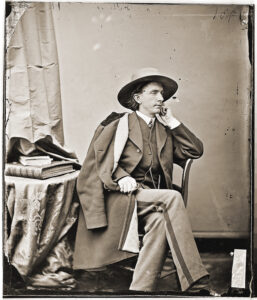 “Another Canadian, a great one, was General William S. Ryan, who went to Cuba in 1873 and was executed by the Spaniards along with about one hundred others. With 273 aboard, the steamer Virginius was captured by the Spanish man-of-war Tornado, and towed into Santiago harbour. One hundred of the officers and crew of the boat had been taken ashore and shot and the remainder were being marched out for execution when the captain of a British man-of-war came to the rescue and, placing the Union Jack over one of the intended victims, dare the Spanish commander to fire. He respected the flag, and although General Ryan and 100 of his comrades had fallen, the others were spared, and from this incident rose the expression that ‘Blood is thicker than water.’
“Another Canadian, a great one, was General William S. Ryan, who went to Cuba in 1873 and was executed by the Spaniards along with about one hundred others. With 273 aboard, the steamer Virginius was captured by the Spanish man-of-war Tornado, and towed into Santiago harbour. One hundred of the officers and crew of the boat had been taken ashore and shot and the remainder were being marched out for execution when the captain of a British man-of-war came to the rescue and, placing the Union Jack over one of the intended victims, dare the Spanish commander to fire. He respected the flag, and although General Ryan and 100 of his comrades had fallen, the others were spared, and from this incident rose the expression that ‘Blood is thicker than water.’
“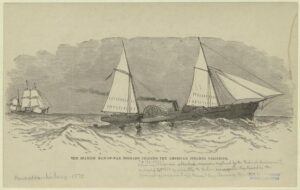 Major McVicker, son of a regular in the British army, at the time residing in Kingston, was one of the best known men in the Northern army until he was killed leading a charge at the Battle of Malvern Hill. It was one of the first engagements that I entered that a young fellow from Port Hope (I forget his name) was shot through the heart and instantly killed; from time to time I heard of other Canadians who had fallen – victims of either Southern bullets or disease.
Major McVicker, son of a regular in the British army, at the time residing in Kingston, was one of the best known men in the Northern army until he was killed leading a charge at the Battle of Malvern Hill. It was one of the first engagements that I entered that a young fellow from Port Hope (I forget his name) was shot through the heart and instantly killed; from time to time I heard of other Canadians who had fallen – victims of either Southern bullets or disease.
Thousands at Gettysburg
“I know of over a hundred Canucks that fought in the Battle of Gettysburg, but the official records show that there were thousand Canadians in that decisive battle. The United States government has treated the Canadians as it did its own sons, and there are several hundred men in Canada today receiving substantial pensions for their work in the Civil War.
“Not only did some of them get American pensions but those of us who fought in the Fenian raids have received recognition by a bounty and land grants from the Canadian government, a fortune enjoyed by very few old soldiers. The United States government has appreciated what Canadians did for it during that long war and it is now proposed to erect a special monument to perpetuate the memory of Canadians who fought in the Civil War.”
Anson A. Gard, of Toronto, is bringing Washington’s attention to the lack of a monument.
Those who remain to lay flowers on the graves of their dead comrades this Decoration Day are few, and although this appeal was sent to every remaining vetrean in the city for an assemblage, only 11 answered the call.
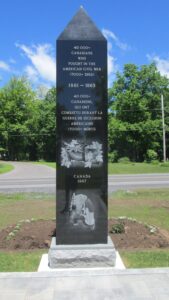 Dear Comrade: — You are cordially invited to be present at the home of Comrade John A. Macdonald, 41 Macdonell Avenue, Parkdale, on Saturday next at 2.30 p.m. when a photographic group will be taken of the survivors of James S. Knowlton Post No. 532, G.A.R., for publication in the issue of the Sunday World on Memorial Day. Be sure and come, and bring your G.A.R. badge. “Rally once again,” comrade, and be in line on this occasion. Our ranks are growing smaller every year.”
Dear Comrade: — You are cordially invited to be present at the home of Comrade John A. Macdonald, 41 Macdonell Avenue, Parkdale, on Saturday next at 2.30 p.m. when a photographic group will be taken of the survivors of James S. Knowlton Post No. 532, G.A.R., for publication in the issue of the Sunday World on Memorial Day. Be sure and come, and bring your G.A.R. badge. “Rally once again,” comrade, and be in line on this occasion. Our ranks are growing smaller every year.”
On the third Saturday afternoon of every month, the shattered remnants of this band of fighters meets in a small room in the Sons of England building. At the end of the room, draped around the picture of Abraham Lincoln, are two flags, their own, the Canadian, and the flag for which they fought, the Stars and Stripes. They love both, but they desire to die under the British flag of their own birth.
Many Relics Here
There are many interesting relics among the collections of the Toronto veterans. Beside an old bayonet picked up on the field of Gettysburg, from its appearance made by a ‘smithy’ in some Southern village, Captain Macdonald has a padlock that was wrenched from the back door o Libby Prison, at Richmond, Virginia. The huge old muzzle loaders that were carried through the hard campaigns still adorn the walls of many dens. A few of the veterans still have preserved their old uniforms that they wore during the strenuous periods, although in most cases these have long since disappeared being worn to shreds before the memories of the war became distant and dear.
Those shown in the picture which was taken last Saturday afternoon, are, from the left:
Bottom row: William Greenwood, 33rd and 49 th N.Y. Infantry; J. H. Weatherbe, 6th Wisconsin Infantry; Commander Thomas Hughes, 7th New Haven and U.S.S. Corondolet; J. K. Knowlton, 4th N.Y., 139th N.Y., 90th N.Y., J. M. Lawrence, 159th N. Y.
Top Row: Robert Stevenson U.S.S. Georgia; John A. Macdonald, 7th N.J.; W. H. Bradley, Scout with the 164th N.Y.; Seth Violet, 10th Ohio Cavalry, and Bugler C.R.A. Bolton, who was with the 11th Ohio cavalry as bugler throughout the entire war.
For many years these old men have turned out faithfully to their Post meetings, and this assemblage is probably the largest that will be held before the Post goes completely out of existence. The increasing number of graves, and the decreasing numbers of survivors makes it harder and harder for the few that are left to withstand the financial burden of placing flowers even once a year on the graves of their dead comrades. ♦
See also Canadian Jews fought in American Civil War

